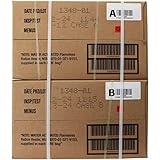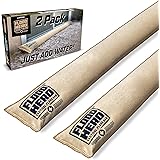Ensuring Readiness in Critical Situations
Understanding the Role of Emergency Equipment
When I think about emergency equipment, the first thing that comes to mind is its vital role during critical situations. From fire extinguishers to first aid kits, these pieces of gear are designed to save lives. There’s something incredibly reassuring about knowing that you have the right tools at hand when the unexpected strikes.
Not just any equipment will do, though! The effectiveness of emergency tools hinges heavily on their reliability. Imagine reaching for a fire extinguisher only to discover it’s past its service date or malfunctioning—what a nightmare that would be!
Regular maintenance ensures these tools are in top condition. I always make it a personal goal to check the readiness of my emergency equipment, knowing that in a crisis, every second counts, and being prepared could make a world of difference.
The Consequences of Neglect
In my years of experience, I’ve learned that neglecting maintenance can lead to dire consequences. Equipment that isn’t properly maintained can fail at the worst possible moment. It’s so easy to think, “Oh, it’s just there in the corner,” but that mindset can be dangerous.
For instance, if an emergency light isn’t checked, it might not function when the power goes out, leaving you in utter darkness during a critical moment. I’d rather take a few minutes to inspect my gear than gamble with my safety or that of others.
Moreover, the costs of neglect can outstrip the expenses associated with regular maintenance. Replacing equipment after it has failed can be an ordeal, not to mention the potential for injury or even loss of life. Trust me, you don’t want to be in that position.
Creating a Maintenance Schedule
Creating a regular maintenance schedule has been a game-changer for me. At first, it seemed daunting; I wasn’t sure how often to inspect each piece of equipment. But after doing some research, I found that a little planning goes a long way!
What I do is set reminders on my calendar. Whether it’s monthly checks for batteries in smoke detectors or annual servicing for fire extinguishers, having a dedicated time helps me stay consistent. Plus, it gives me peace of mind knowing I’ve covered my bases.
== > What if ... Get a FREE Subscription to PREPARE
I also make it a family affair! Getting everyone involved not only holds us accountable but also teaches everyone the importance of being prepared. It’s surprising how much easier it is to keep track of things when the whole crew is on board.
Compliance with Regulations
Understanding Local Laws
Another critical aspect of maintaining emergency equipment is understanding and adhering to local laws and regulations. Honestly, when I first got into this, I didn’t realize how complex this could be!
There are various codes that dictate how often equipment should be inspected and maintained. For someone like me, who always wants to be above board, keeping up with these regulations is essential. It’s not just about being prepared; it’s about ensuring you’re compliant with the law.
Not only does this keep me safe, but it also helps prevent potential legal liabilities that can arise if equipment fails during an emergency. I’ve always believed in playing it smart, and knowledge of local laws goes a long way in risk management.
Updating Equipment as Necessary
As I’ve rung in the years, I’ve also realized how important it is to update equipment when necessary. You might have a piece that’s served you well for a decade, but technology evolves, and so should your equipment.
For example, I once had a fire extinguisher that was exceptionally outdated. A quick check revealed it was no longer effective against certain fires. I made the switch to a modern version, and wow, the difference was night and day! My confidence in what I had on hand soared.
Investing in newer models may seem like a hassle, but it’s about ensuring that you’re ready for whatever comes your way. I’ve found that the small upgrades can deliver big peace of mind when push comes to shove.
Training and Familiarization
Training is another crucial piece of the puzzle when it comes to emergency equipment maintenance. Even the most reliable equipment is only effective if the people using it know how to operate it. I can’t stress how many times I’ve seen people freeze up in a crisis!
Get Preparedness and Self-Reliance Tips. Subscribe Now!
Regular training sessions help everyone in my household feel comfortable with the equipment. We practice using the fire extinguisher and review other emergency protocols. It’s fascinating how a little practice can turn panic into action.
Not everyone is born a hero, but preparedness can foster heroism. Everybody should feel equipped—not just with tools, but with knowledge and authority to use them in emergencies. That’s my mission every time we get together to review our emergency plans.
Budgeting for Maintenance
Understanding Your Costs
Budgeting for maintenance has been a vital part of my overall strategy. It can be easy to overlook, but the costs associated with neglecting your emergency equipment can be significantly higher than proactive maintenance.
I keep a separate budget line for maintenance and review it periodically. By knowing what I need to set aside for inspections, replacements, and repairs, I feel more in control. Plus, it’s a great way to ensure my family’s safety without breaking the bank.
Implementing a smart budgeting strategy means I’m ready for unexpected costs. The last thing I want is to be caught off guard when it’s time for some essential gear checks. It saves me from heart palpitations later on!
Investing in Quality Equipment
My rule of thumb has become clear over the years: investing in quality equipment can save you money in the long run. I don’t skimp on gear; after all, you get what you pay for!
When I choose equipment, I go for brand reputation and durability. Sure, there might be cheaper options out there, but when it’s about safety, I opt for something tried and tested. Those little savings can’t compare to the peace of mind good equipment provides.
Every time I make a purchase, I think about how this item could perform in an urgent situation. It’s all about long-term value, and I’m here for anything that lasts longer and performs better.
Revisiting Your Budget Regularly
Just like checking up on the equipment itself, revisiting my budget regularly helps me stay on top of everything. I like to think of this as a quarterly check-up for my emergency planning. Life throws curveballs, and it’s essential to ensure my financial plans can handle them.
I examine whether my initial estimates hold up or if I need to allocate more funds to certain items. The last thing I want is to skimp on something that could save lives—and my budgeting reflects that commitment.
By staying proactive, I create a financial buffer that allows me to stay equipped without compromising on safety. Each review brings me closer to feeling fully prepared for anything life might throw my way.
FAQ
1. Why is regular maintenance of emergency equipment necessary?
Regular maintenance ensures that emergency equipment is functioning properly and can be relied upon during critical situations. Neglect can lead to equipment failure when it’s needed the most.
2. How often should I inspect my emergency equipment?
It’s generally advisable to conduct monthly checks on certain items like smoke detectors and perform thorough annual servicing on larger equipment like fire extinguishers.
3. What are the potential consequences of neglecting maintenance?
Neglecting maintenance can lead to equipment failure, which could result in injuries, higher replacement costs, and even legal liability if emergencies aren’t handled properly.
4. How can I get everyone in my household involved in emergency preparedness?
Involve everyone by organizing regular training sessions, creating a fun review of emergency procedures, and assigning roles during drills. Make it a family activity to enhance participation!
5. Is there a good way to budget for emergency equipment maintenance?
Absolutely! Create a dedicated budget line for maintenance and set aside funds for inspections and potential replacements. Reviewing this budget quarterly can help you stay on track.






